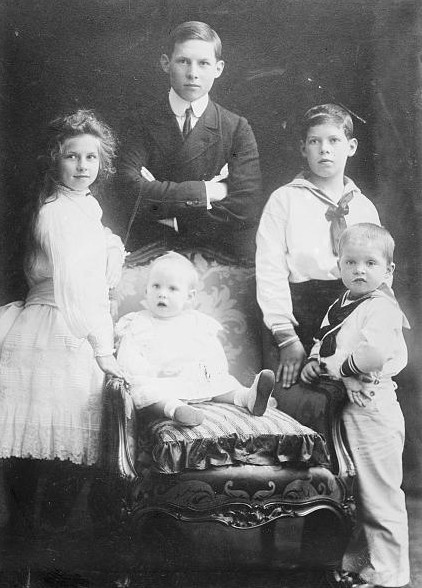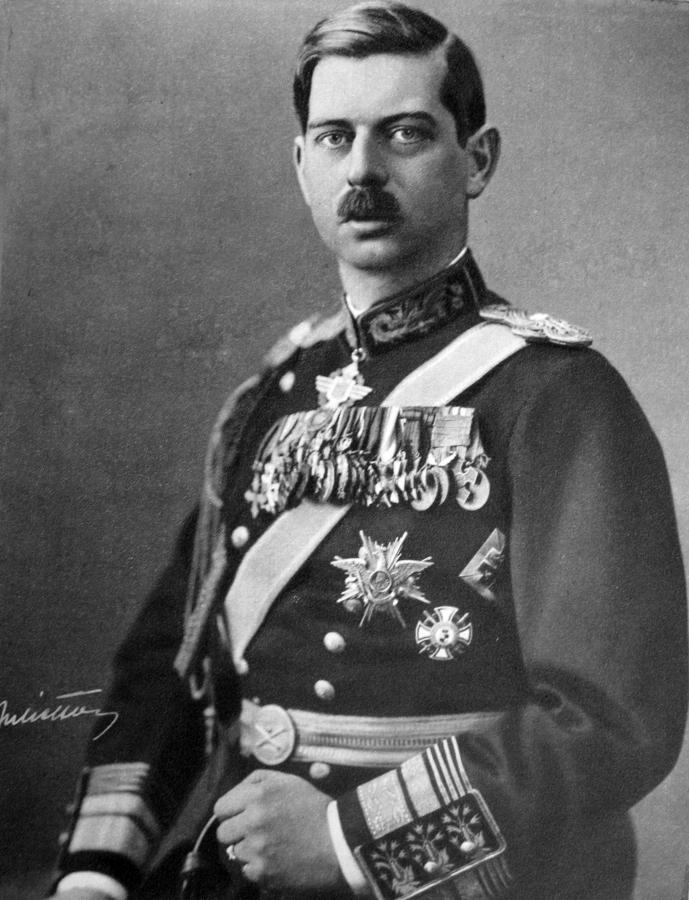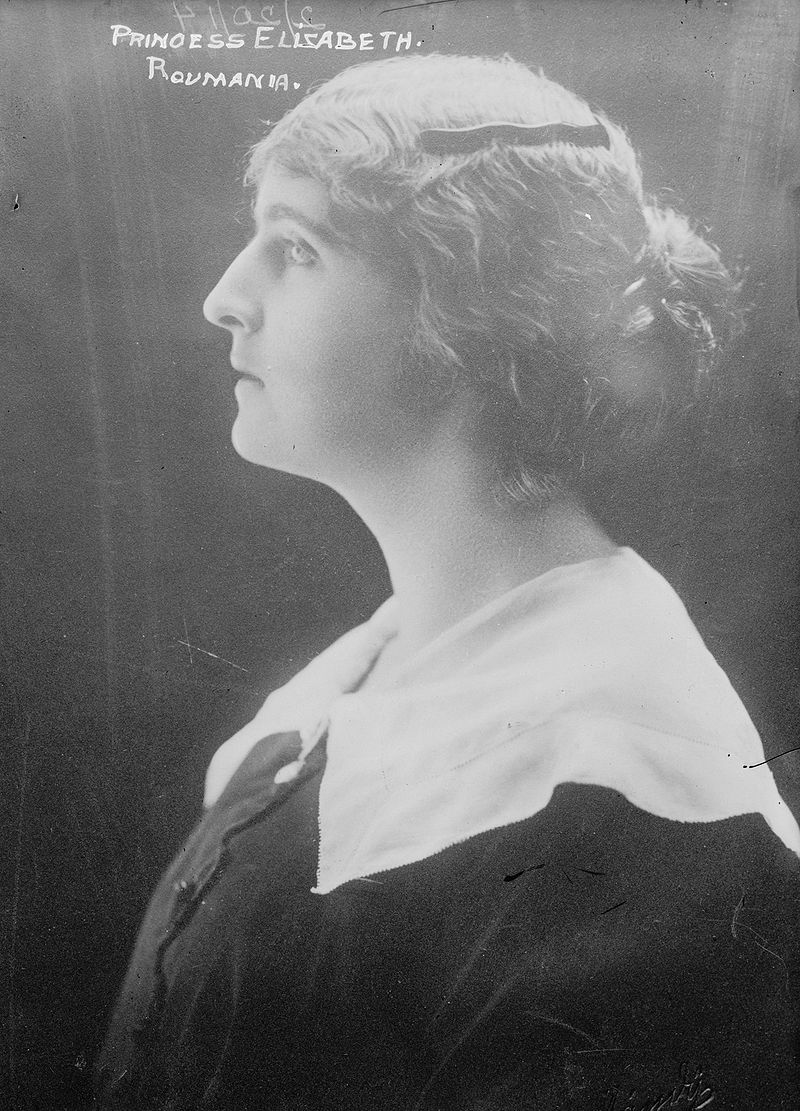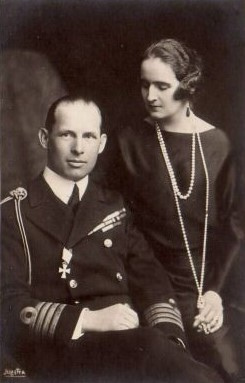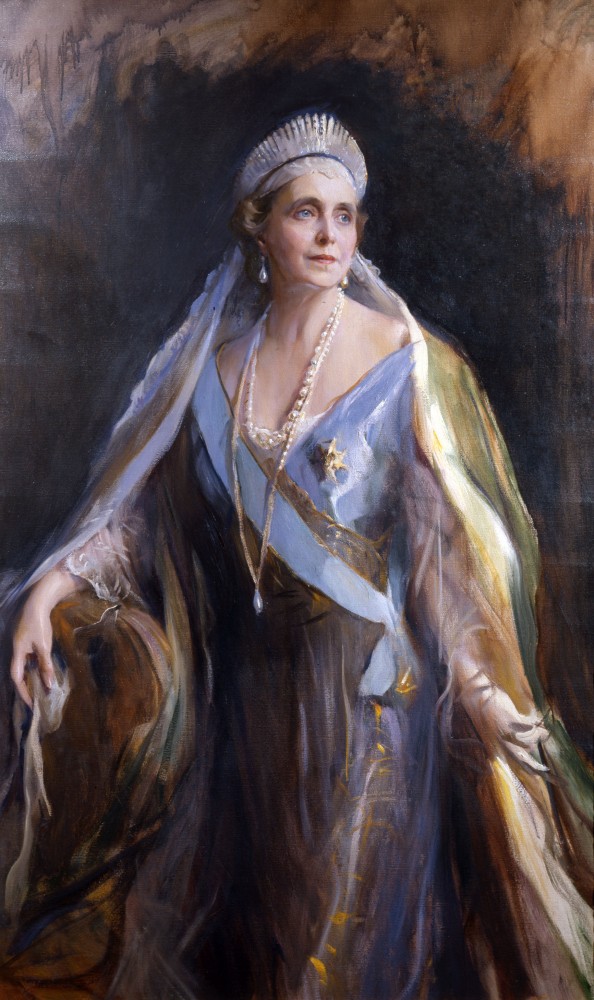by Susan Flantzer
© Unofficial Royalty 2022

The 16th-century Cathedral of Curtea de Argeș; Credit – By Alexandru Baboş Albabos – Own work, CC BY 3.0, https://commons.wikimedia.org/w/index.php?curid=10304987
The Monastery of Curtea de Argeș is a Romanian Orthodox monastery in Curtea de Argeș, Romania built between 1515 – 1517, during the reign of Neagoe Basarab V, Prince of Wallachia. On the grounds of the monastery is the 16th-century Cathedral of Curtea de Argeș. The cathedral served as a burial site for Neagoe Basarab V and his family and as the seat for the Romanian Orthodox Archdiocese of Argeș and Muscel. During the reign (1881 – 1914) of Carol I, King of Romania, a burial site for the Royal Family of Romania was established at the cathedral.

The 21st-century New Archbishopric and Royal Cathedral in Curtea de Argeș; Credit – By Rereader1996 – Own work, CC BY-SA 4.0, https://commons.wikimedia.org/w/index.php?curid=84735309
The New Archbishopric and Royal Cathedral in Curtea de Argeș was built on the monastery grounds from 2009 – 2018. It serves as the seat of the Archdiocese of Argeș and Muscel and as a new burial site for members of the Royal Family of Romania
********************
The Cathedral of Curtea de Argeș
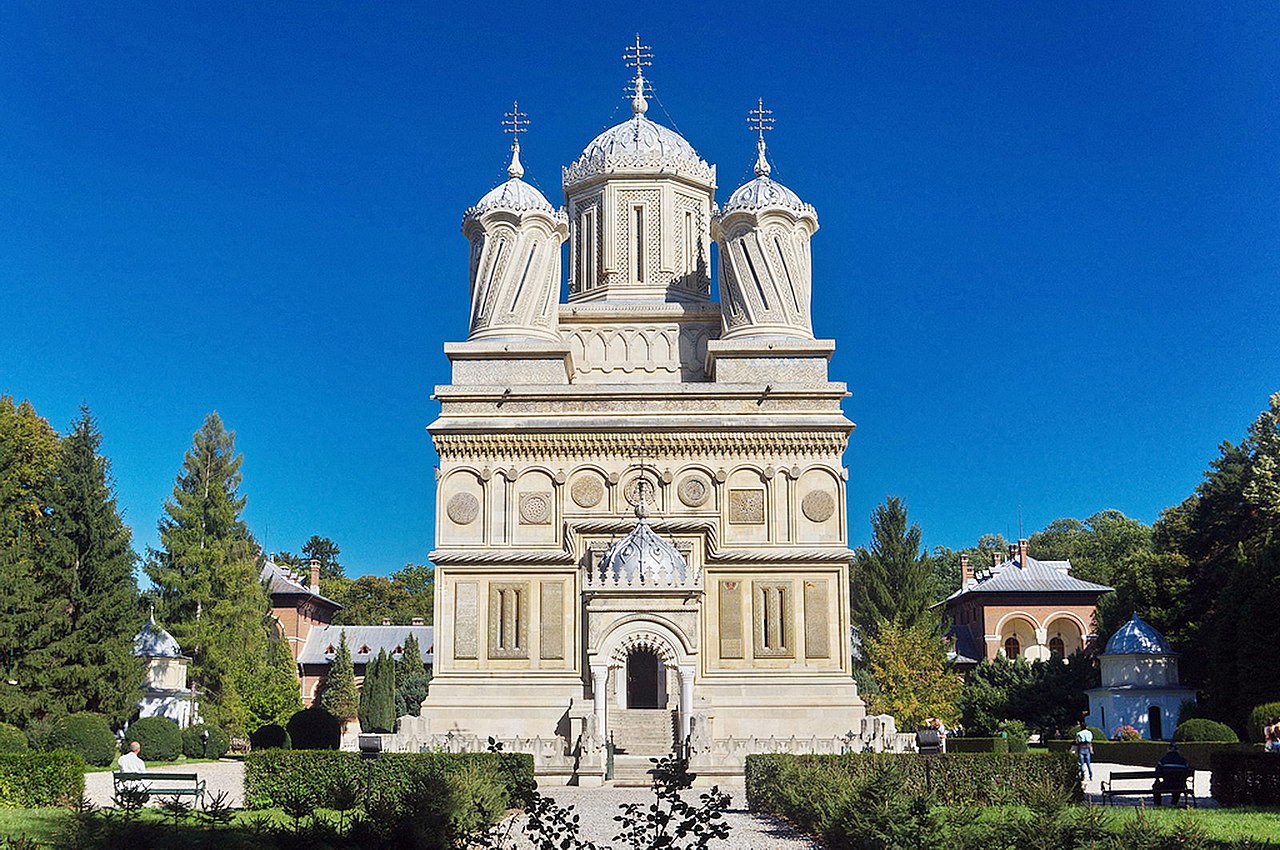
Credit – By Florin – Own work, CC BY-SA 3.0 ro, https://commons.wikimedia.org/w/index.php?curid=28662047
The 16th-century cathedral was built during the reign of Neagoe Basarab V, Prince of Wallachia. Wallachia, a historical and geographical region of Romania, was founded as a principality in the early 14th century. One of the earlier Princes of Wallachia was Vlad III, Prince of Wallachia, commonly known as Vlad the Impaler (Romanian: Vlad Țepeș) or Vlad Dracula (reigned 1428 – 1431 and 1476 – 1477). Neagoe Basarab made major donations to Orthodox churches and monasteries in Wallachia and throughout what is known today as Eastern Europe and also in the Ottoman Empire and the Holy Land. He used the religious and political traditions from the defunct Byzantine Empire in his style of ruling. Neagoe Basarab also established diplomatic contacts with the Pope, taking steps to resolve the conflict between the Roman Catholic Church and the Orthodox Church. On July 8, 2008, the Holy Synod of the Romanian Orthodox Church canonized Neagoe Basarab as a saint. His feast day is celebrated on September 26.

Part of the ceiling; Credit – By Pudelek – Own work, CC BY-SA 4.0, https://commons.wikimedia.org/w/index.php?curid=64976936
Neagoe Basarab had direct involvement in the planning and building of the Cathedral of Curtea de Argeș. The cathedral was consecrated on August 15, 1517, and was dedicated to the Dormition of the Mother of God, the Orthodox feast celebrated on August 15, of the “falling asleep” (death) of Mary the Theotokos (Mother of God, literally translated as God-Bearer), and her being taken bodily up into heaven (Assumption of Mary in the Roman Catholic religion).

View from the back showing the annex; Credit – By Daria Virbanescu – Own work, CC BY-SA 4.0, https://commons.wikimedia.org/w/index.php?curid=72885130
The oblong cathedral, in the Byzantine style with Moorish arabesques, sits upon a raised platform above the ground with a many-sided annex at the back. The two smaller cupolas sit in front of the central dome and another dome is above the annex. Atop each dome is the triple cross, representing the Trinity.

The iconostasis – the wall of icons and religious paintings, separating the nave from the sanctuary in an Orthodox church; Credit – Wikipedia By Pudelek – Own work, CC BY-SA 4.0, https://commons.wikimedia.org/w/index.php?curid=64976937
In the narthex of the cathedral, a lobby area typical of early Christian and Byzantine churches, are the tombs of the cathedral’s founder Neagoe Basarab V, Prince of Wallachia, his wife Milița Despina, and several other family members. Also in the narthex, members of the recent Royal Family of Romania were buried although several have been re-interred at the New Archbishopric and Royal Cathedral.
********************
The New Archbishopric and Royal Cathedral in Curtea de Argeş

By Rereader1996 – Own work, CC BY-SA 4.0, https://commons.wikimedia.org/w/index.php?curid=84735313
The New Archbishopric and Royal Cathedral was a joint project of the Archdiocese of Argeș and Muscel and the Royal House of Romania. The Romanian royal family wanted a new burial site because the 16th-century Cathedral of Curtea de Argeș had no more room for burials while the new cathedral would serve the Archdiocese of Argeş and Muscel as the seat of the archdiocese. The expenses for the construction were shared by the Royal House of Romania and the Archdiocese of Argeş and Muscel.
Dr. Augustin Ioan, a Romanian architect, writer, and professor at the Ion Mincu University of Architecture and Urban Planning in Bucharest, Romania was chosen to design the new cathedral. In 2008, the first discussion took place between architect Dr. Augustin Ioan and Princess Margareta of Romania, the eldest of the five daughters of former King Mihai of Romania (also known as Michael, reigned 1927 – 1930 and 1940 – 1947 when the monarchy was abolished), known as the Custodian of the Crown of Romania since her father’s death in 2017, and her husband Prince Radu of Romania. Princess Margareta expressed the wish of her father King Mihai to be buried with his ancestors and to bring them all together to be buried in the same place. On May 10, 2009, the foundation stone was laid in the presence of Princess Margareta and her husband Prince Radu.
The new cathedral was designed in the style of Byzantine architecture as a tribute to the 16th-century cathedral. The interior was decorated with mosaics, in the style of the old cathedral. Likewise, the stone exterior of the new cathedral makes a connection to the old cathedral.

Graves in the new burial site; Credit – By Rereader1996 – Own work, CC BY-SA 4.0, https://commons.wikimedia.org/w/index.php?curid=84733946
The royal burial site of the new cathedral is located on the right after the entrance. Because the sixteen gravesites could not all be aligned to the east as is the tradition, architect Augustin Ioan came up with a solution. He designed the royal burial site as a circular arcaded portico with the altar in the middle, explaining “The holy altar table represents the mystical east of the church. At the liturgy, the living and the dead await together the conversion of wine and bread into the blood and flesh of Christ, but also the Resurrection.” When entering the burial site, visitors have a figurative and a literal threshold of light to cross because the entrance is a structural glass bridge with light below.
The child martyr Saint Filofteia carrying her food basket with the axe that killed her on the ground
The New Archbishopric and Royal Cathedral in Curtea de Argeş was consecrated on December 7, 2018, and dedicated to Archangel Michael and Archangel Gabriel and the child martyr Saint Filofteia (1206 – 1218) who lived in what is now Bulgaria. Filofteia was a loving, generous and kind little girl whose father and stepmother often beat her. While bringing a basket of food to her father working in the fields, Filofteia would often give some of the food to her less fortunate neighbors. When her father found out where the food was going, he became so angry that he hit her with an ax in the leg and she bled to death. According to the story, Filofteia’s body remained on the ground for days because no one could lift it, as if an otherworldly force was holding it to the ground. The surrounding area glowed with a bright and persistent light and people flocked to the area to pray.

Filofteia’s relics; Credit – De la Țetcu Mircea Rareș – Operă proprie, CC BY-SA 3.0 ro, https://commons.wikimedia.org/w/index.php?curid=28263365
Finally, Filofteia’s remains were properly cared for and were considered a miraculous relic. Eventually, the relics were then given to Mircea the Elder, Prince of Wallachia (reigned 1386 – 1418) who placed them in the Princely Church of Saint Nicholas in Curtea de Argeș which was built in the beginning of the 14th-century. Filofteia was considered the protector of Wallachia. The relics were eventually placed in the Cathedral of Curtea de Argeș. Filofteia’s relics have been moved to a small chapel on the left of the entrance of the New Archbishopric and Royal Cathedral, across from the new royal burial site.
********************
Buried at the Cathedral of Curtea de Argeș
Family of Neagoe Basarab V, Prince of Wallachia, the builder of the Cathedral of Curtea de Argeș

Neagoe Basarab of Wallachia and his family with the Cathedral of Curtea de Argeș in the middle: on the left, Neagoe Basarab and his three sons: Teodosie, Petru, and Ioan; on the right his wife Milica Despina and their daughters: Stana, Ruxandra, and Angelina; Credit – https://mappingeasterneurope.princeton.edu/item/neagoe-basarab-of-wallachia-and-his-family.html
- Neagoe Basarab V, Prince of Wallachia (circa 1459 – 1521)
- Milica Despina of Serbia wife of Neagoe Basarab V (circa 1485 – 1554)
- Ștefăniță IV, Prince of Moldavia (1506 – 1527), son-in-law of Neagoe Basarab V
- Stana of Wallachia, daughter of Neagoe Basarab V, wife of Ștefăniță of Moldavia
- Radu of Afumați, Prince of Wallachia (? – 1529), son-in-law of Neagoe Basarab V
- Ruxandra of Wallachia, daughter of Neagoe Basarab V, wife of Radu of Afumați, Prince of Wallachia

The grave of Radu of Afumați, Prince of Wallachia, son-in-law of Neagoe Basarab V: Credit – Țetcu Mircea Rareș Own work, CC BY-SA 3.0 ro, https://commons.wikimedia.org/w/index.php?curid=28263363
The Recent Royal Family of Romania

King Carol I in the center with his nephew the future King Ferdinand I on the right and his great-nephew the future King Carol II on the right; Credit – Wikipedia
Because of political unrest in what was then called the Romanian United Principalities, the Ruling Prince, Alexander Ioan Cuza, was forced to abdicate in February 1866. Due largely to the familial relationship with the French Emperor Napoleon III and the Prussian monarchs, Prince Karl of Hohenzollern-Sigmaringen was elected by the Romanian government to become the new Ruling Prince. Karl arrived in Romania on May 10, 1866, and declared his allegiance to his new country, taking on the more Romanian spelling of his name, Carol. In 1881, the Romanian parliament declared Romania a kingdom, and Prince Carol became King Carol I. Romania remained a monarchy until 1947 when King Mihai I was forced to sign a document of abdication by the Communist regime. A year later, he publicly announced that his abdication was invalid, as it had been forced upon him, and that he remained the rightful King of Romania.
It would be 43 years before Mihai set foot on Romanian soil again. In December 1990, Mihai was given permission for a 24-hour visit. However, this ended up being cut short and he was forced to leave early. He visited Romania in again 1992 but the mass outpouring of crowds and supporters concerned the current government and he was banned again for several years. Finally, in 1997, the Romanian government restored Mihai’s citizenship and in the following years, several properties were returned to the royal family.
Buried at the Cathedral of Curtea de Argeș

The grave of Elisabeth of Wied, Queen of Romania; Credit – By Țetcu Mircea Rareș – Own work, CC BY-SA 3.0 ro, https://commons.wikimedia.org/w/index.php?curid=28263366
Possibly sometime in the future, some or all of the following could be moved from the Cathedral of Curtea de Argeș to the New Archbishopric and Royal Cathedral.
- Carol I, King of Romania (1839 – 1914)
- Elisabeth of Wied, Queen of Romania ( 1843 – 1916), wife of Carol I
- Princess Maria of Romania (1870 – 1874), the only child of Carol I and Elisabeth – Princess Maria died from scarlet fever. When her mother Queen Elisabeth died in 1916, as per her wishes, her daughter’s remains were exhumed and her coffin was placed on her mother’s coffin for the public procession. Mother and daughter were then buried together in the same tomb at the Cathedral of Curtea de Argeș.
- Ferdinand I, King of Romania (1865 – 1927), nephew of Carol I
- Marie of Edinburgh, Queen of Romania (1875 – 1938), wife of Ferdinand I, granddaughter of Queen Victoria
********************
Buried at the New Archbishopric and Royal Cathedral in Curtea de Argeş

The mausoleum at the New Archbishopric and Royal Cathedral; Credit – By Rereader1996 Own work, CC BY-SA 4.0, https://commons.wikimedia.org/w/index.php?curid=84739150
- Anne of Bourbon-Parma, Queen of Romania (titular) (1923 – 2016), wife of Mihai I
- Mihai I (Michael), King of Romania (1921 – 2017), son of Carol II
- Carol II, King of Romania (1893 – 1953), son of Ferdinand I, died in exile in Portugal, first buried at the Royal Pantheon of the House of Braganza at the Monastery of São Vicente de Fora in Lisbon, Portugal, in 2003 his remains were returned to Romania and buried in a chapel outside the Curtea de Argeş Cathedral, reinterred at the New Archbishopric and Royal Cathedral in Curtea de Argeș on March 8, 2019
- Helen of Greece and Denmark, Queen Mother of Romania (1896 – 1982), second of the three wives of Carol II (divorced), mother of Mihai I, first buried at the Bois-de-Vaux Cemetery in Lausanne, Switzerland, reinterred at the New Archbishopric and Royal Cathedral at Curtea de Argeș on October 19, 2019.
- Prince Mircea of Romania (1913 – 1916), the three-year-old son of Ferdinand I, died of typhoid fever on November 2, 1916. As the family was fleeing enemy forces approaching Bucharest during World War I, he was quickly buried in the grounds of Cotroceni Palace. In 1941, his remains were moved to the chapel at Bran Castle. In 2019, his remains found their final resting place at the New Archbishopric and Royal Cathedral at Curtea de Argeş.

Graves of King Mihai I and Queen Anne; Credit – www.findagrave.com
This article is the intellectual property of Unofficial Royalty and is NOT TO BE COPIED, EDITED, OR POSTED IN ANY FORM ON ANOTHER WEBSITE under any circumstances. It is permissible to use a link that directs to Unofficial Royalty.
Works Cited
- Act Media. 2019. Queen Mother reburied at Curtea de Argeş. [online] Available at: <https://actmedia.eu/daily/mother-queen-helen-reburied-in-curtea-de-arges/83231> [Accessed 15 March 2022].
- Agerpres.ro. 2019. DOCUMENTAR: Noua catedrală arhiepiscopală şi regală de la Curtea de Argeş. [online] Available at: <https://www.agerpres.ro/documentare/2019/10/19/documentar-noua-catedrala-arhiepiscopala-si-regala-de-la-curtea-de-arges–388039> [Accessed 15 March 2022].
- En.wikipedia.org. 2022. Curtea de Argeș Cathedral – Wikipedia. [online] Available at: <https://en.wikipedia.org/wiki/Curtea_de_Arge%C8%99_Cathedral> [Accessed 15 March 2022].
- Hu.wikipedia.org. 2022. Curtea de Argeș-i kolostor – Wikipédia. [online] Available at: <https://hu.wikipedia.org/wiki/Curtea_de_Arge%C8%99-i_kolostor> [Accessed 15 March 2022].
- Ionescu, Sinziana, 2016. Secretele Catedralei din Curtea de Argeş în care va fi înmormântată Regina Ana. A fost proiectată de un arhitect dobrogean. [online] adevarul.ro. Available at: <https://adevarul.ro/locale/constanta/secretele-catedralei-curtea-arges-inmormantata-regina-ana-fost-proiectata-arhitect-dobrogean-1_57a87f1b5ab6550cb893f12a/index.html> [Accessed 15 March 2022].
- Radioromaniacultural.ro. 2018. Născut în România – Un loc de odihnă pentru toţi Regii României; Noua Necropolă Regală de la Curtea de Argeş invitat- arh. Augustin Ioan – Radio România Cultural. [online] Available at: <https://www.radioromaniacultural.ro/nascut-in-romania-un-loc-de-odihna-pentru-toti-regii-romaniei-noua-necropola-regala-de-la-curtea-de-arges-invitat-arh-augustin-ioan/> [Accessed 15 March 2022].
- Ro.wikipedia.org. 2022. Mănăstirea Curtea de Argeș – Wikipedia. [online] Available at: <https://ro.wikipedia.org/wiki/M%C4%83n%C4%83stirea_Curtea_de_Arge%C8%99> [Accessed 15 March 2022].
- Ro.wikipedia.org. 2022. Noua Catedrală Arhiepiscopală din Curtea de Argeș – Wikipedia. [online] Available at: <https://ro.wikipedia.org/wiki/Noua_Catedral%C4%83_Arhiepiscopal%C4%83_din_Curtea_de_Arge%C8%99> [Accessed 15 March 2022].
- Ro.wikipedia.org. 2022. Sfânta Muceniță Filofteia de la Argeș – Wikipedia. [online] Available at: <https://ro.wikipedia.org/wiki/Sf%C3%A2nta_Muceni%C8%9B%C4%83_Filofteia_de_la_Arge%C8%99> [Accessed 15 March 2022].
- Sullivan, Alice Isabella, 2022. Neagoe Basarab of Wallachia and His Family. [online] Mappingeasterneurope.princeton.edu. Available at: <https://mappingeasterneurope.princeton.edu/item/neagoe-basarab-of-wallachia-and-his-family.html> [Accessed 15 March 2022].
- Tour-romania.com. 2022. Curtea arges Monastery Romania. [online] Available at: <http://www.tour-romania.com/highlight/curtea_arges.html> [Accessed 15 March 2022].
- Travel Notes & Beyond. 2022. Curtea de Arges Cathedral – From Myth to History and Back. [online] Available at: <https://travelnotesandbeyond.com/curtea-de-arges-cathedral/> [Accessed 15 March 2022].
- Welcometoromania.eu. 2022. Arges Monastery, the Episcopal Church, Curtea de Argeș·. [online] Available at: <https://www.welcometoromania.eu/Curtea_de_Arges/Curtea_de_Arges_Manastirea_Arges_e.htm> [Accessed 15 March 2022].







